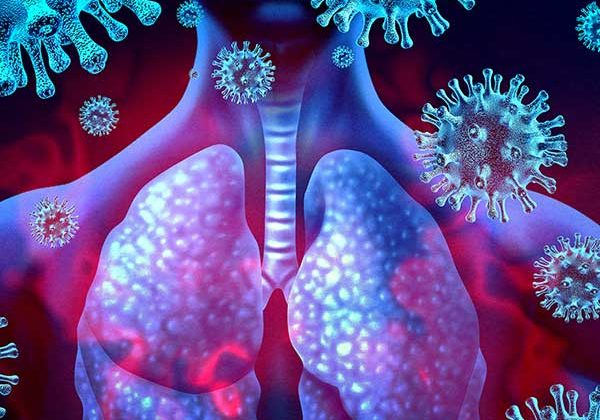ADVICE FOR PEOPLE ON BLOOD THINNING DRUGS AND THOSE WITH BLEEDING DISORDERS IN RELATION TO THE PFIZER/BIONTECH COVID-19 VACCINE
Wed 30-Dec-2020
General Comments:
Since there has not been any significant ill reactions up to now to this vaccine in people on anticoagulants and those with bleeding disorders, receiving this vaccine outweighs the risks and is considered to be safe. The main potential contraindication is in those with a history of significant allergic reactions. In this case, please consult your respective physicians.
Otherwise, the main issue is that since this is an intramuscular injection, the needle could cause bleeding in similar patients. Hence the advice below. Please note that we are assuming that the vaccine will be administered in the morning. Also, this advice applies specifically to the Pfizer/BioNtech vaccine and not for others that might follow.
Advice applying to ALL patients at higher risk of bleeding:
- Ideally, the smallest gauge needle available (23-25 gauge) should be used in all of these patients. So please inform the person who is administering the vaccine that you have an increased risk of bleeding before they prepare to inject.
- Apply pressure at the injection site for 5 minutes after the inoculation.
- In the case of a large haematoma/bruise, please consult your doctor.
Specific Advice:
- Anticoagulants
- Warfarin
Ideally, people on Warfarin should check their INR blood test a few days before having their vaccine. However, in those patients who have very stable INRs, this is not an absolute requirement. If the INR is less than 4.0, it should be safe to proceed with the vaccine. In cases, of INRs greater than 4.0, please consult your local Anticoagulation Clinic.
Rivaroxaban
Rivaroxaban or the brand name Xarelto is typically administered as 10 or 20mg once a day. For those patients who take the drug in the morning, it would be safe to delay the dose on the day of the vaccine and restart 6 hours after the vaccine. For those who take the drug in the afternoon/evening, continue as normal and then on the day of the vaccine, delay the next dose of Rivaroxaban by at least 6 hours after the vaccine. Like this, the patient would not have missed any doses.
Those patients taking 2.5mg twice a day, can just omit the morning dose on the day of the vaccine. Those cases with acute thrombosis who are receiving the highest dose of Rivaroxaban ie 15mg twice a day should ideally delay the vaccine until they decrease the dose to 20mg daily.
Apixaban
Apixaban or the brand name Eliquis is administered as 5mg or 2.5mg twice a day. One can just omit the morning dose on the day of the vaccine and then continue as normal. Those patients with acute thrombosis who are on the higher dose of Apixaban ie 10mg twice a day should ideally delay the vaccine until they decrease the dose to 5mg twice a day.
Dabigatran
Dabigatran or the brand name Pradaxa is typically administered as 75mg, 110mg or 150mg twice daily. One can just omit the morning dose on the day of the vaccine and then continue as normal. Those people who are pregnant or under 16 years of age should NOT immediately receive the vaccine whether or not they are on Clexane. These persons should liaise with their obstetrician or paediatrician respectively. Many people are on Aspirin or Clopidogrel or sometimes both drugs together. In these cases, it is advisable that they carry on taking their antiplatelet drugs as normal. Don’t forget to press for 5 minutes on the inoculation site after the injection.
Inherited Bleeding Disorders
A summary of the locally adapted recommendations follows below:
- The vaccine should be administered intramuscularly. The smallest gauge needle available (23-25 gauge) should be used, if possible. Some vaccines must be administered using the accompanying needle–syringe combination, and so the use of an alternative needle may not be possible or desirable. Pressure should be applied to the site for at least 10 minutes post-injection to reduce bleeding and swelling. Additionally, self-inspection/palpation of the injection area several minutes and 2-4 hours later is recommended to ensure that there is no delayed hematoma. Discomfort in the arm felt for 1-2 days after injection should not be alarming unless it worsens and is accompanied by swelling. Any adverse events (e.g., hematoma, allergic reaction) should be reported to a haemophilia treatment centre.
- Patients should contact their physician immediately or go to the nearest hospital emergency room right away if they experience an allergic reaction (fever, warmth, redness, itchy skin rash, shortness of breath, or swelling of the face or tongue) as it can be life-threatening. Patients with a history of allergic reactions to extended half-life clotting factor concentrates containing polyethylene glycol (PEG) should discuss vaccine choice with their physician because some vaccines contain PEG as an excipient. These products are not typically available in Malta.
- For patients with severe/moderate haemophilia on prophylaxis, the vaccine should be given after a factor VIII (FVIII) or factor IX (FIX) injection. For patients with a basal FVIII or FIX level above 10%, no haemostatic precautions are required but apply at least 5 minute pressure on the injection site. Those who are on FEIBA should also take a dose prior to the vaccine injection.
- Patients with Willebrand disease (VWD), depending on their baseline von Willebrand factor (VWF) activity levels, should use therapies (i.e., DDAVP if available, tranexamic acid), in consultation with the Malta Centre for Bleeding and Thrombotic Disorders which is an EU accredited Haemophilia treatment centre.
- Patients with severe FXIII deficiency and those with afibrinogenaemia should ideally receive the vaccine immediately after their routine prophylactic dose of FXIII or fibrinogen concentrate respectively.
- There are no specific contraindications to vaccination related to complications of haemophilia and other bleeding disorders or their therapies. Immune tolerance, treatment of hepatitis C and HIV, and other conditions do not contraindicate vaccination.
- Vaccination is not contraindicated for patients on immunosuppressive agents (eg prednisolone, other immunosuppressive drugs).
- Those patients with a history of severe allergic reactions should contact their doctor BEFORE they get the vaccine since this might be contraindicated in this case.
Patients with low platelets eg ITP, other
Those people who suffer from low platelets or some platelet function defect could also be vaccinated. So long that the platelet count is not less than 20 x 109/L, one can proceed with the vaccine and then apply pressure for 5 minutes after the injection. The vaccine is also indicated in those suffering from Immune Thrombocytopenia Purpura (ITP). It might be prudent to check a CBC blood test in those with a history of low platelets prior to vaccination.
In case of queries, please contact the centre or your respective physicians.
Alex Gatt
Lead in Coagulation
29th December 2020



